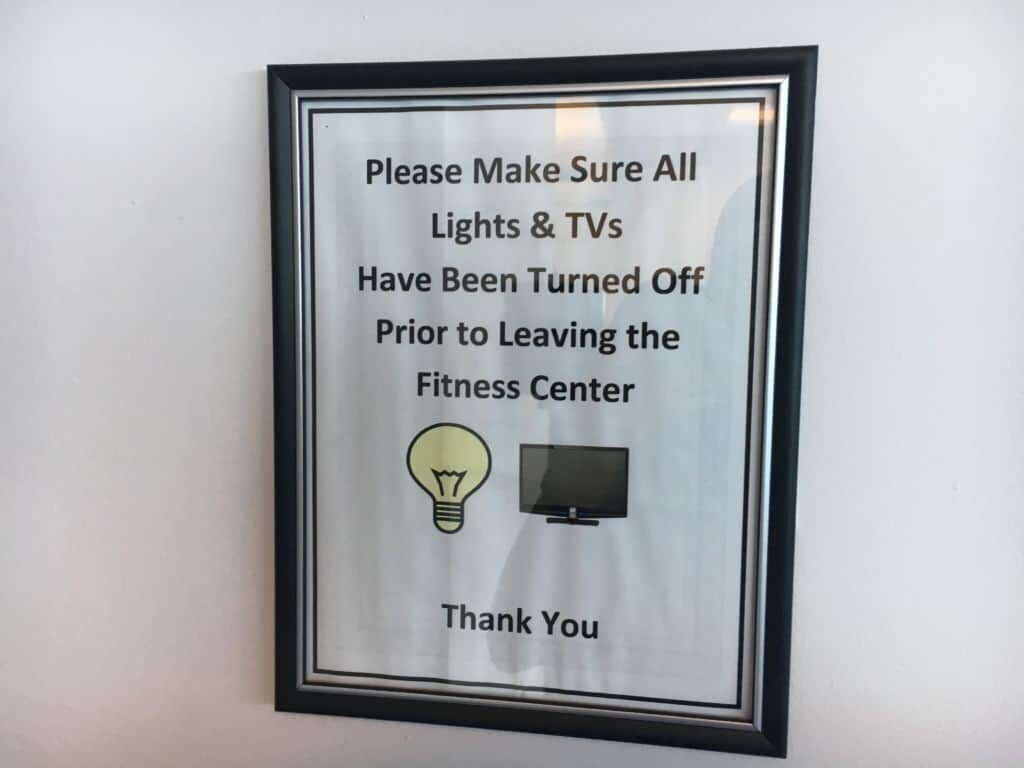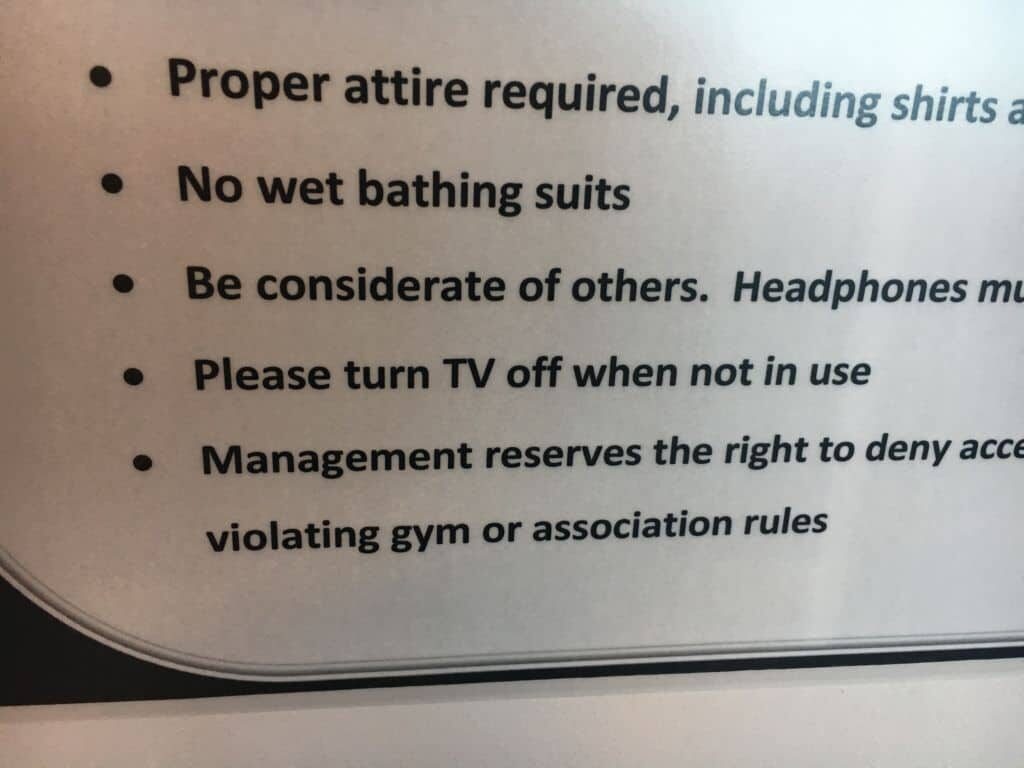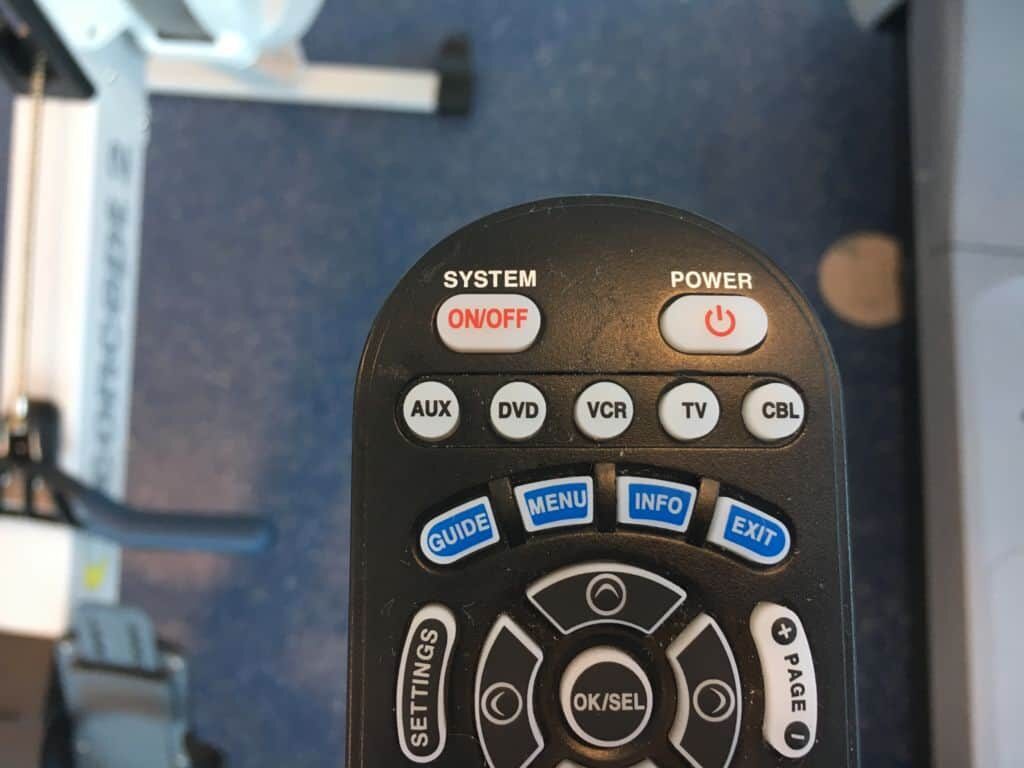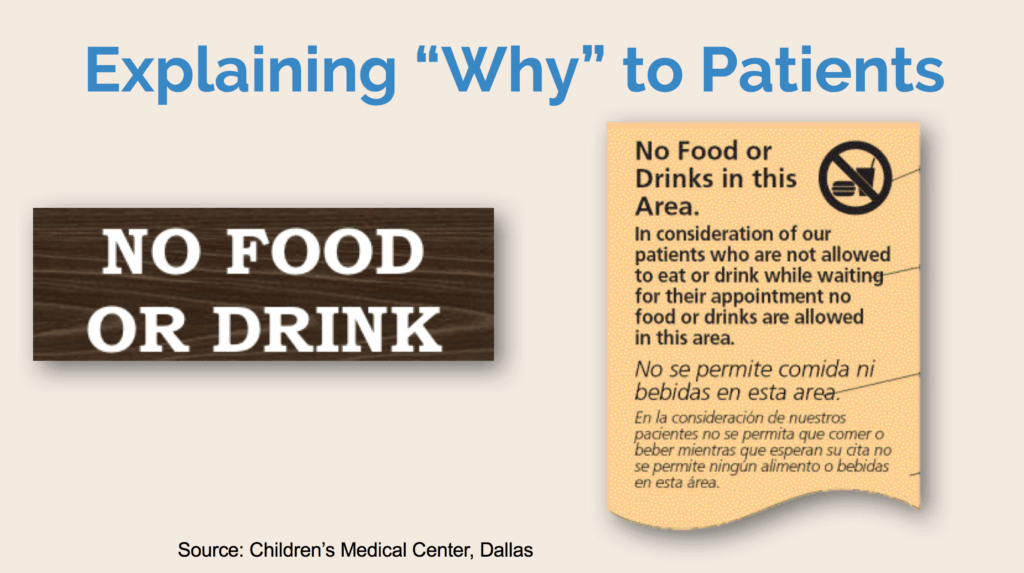I've written many blog posts over the past decade about “warning signs” or instructional signs not being as effective as the Lean concept of “mistake proofing.”
See some of these past posts:
Signs are Not Error Proofing: Electrical Circuit Breaker Edition
Mr. Burns From the Simpsons is, No Surprise, a Safety Hypocrite
I have another separate blog at BeMoreCareful.com that has examples of silly warning signs that don't get to the root cause of a problem.
One problem with signs is that they're often “bossy” or coercive in nature. Somebody is commanding you, through a sign, to do something or not do something. That's often “Management” or “The Management” as these signs tend to be signed.
In a workplace, if we're relying on “visual” work instructions, are they accurate? Are they sometimes conflicting? Do they disrespect people by not explaining why something should be done (or not done)?
I often work out in a gym that has directives about turning off the two TVs when done and leaving the gym empty.
There is a standalone sign:
It's also reinforced in a long list of gym rules:
Neither of these signs explain why. But, maybe it's obvious that the gym is trying to save energy. Fair enough.
The confusion comes from the signs are that on the bottom of each of the two TVs:
We have signs giving completely opposite directions. This sign also doesn't explain why the TVs should be left on. That's harder to figure out.
One of the remotes has a warning at the bottom:
That instruction also doesn't explain why. So we're not supposed to use the “SYSTEM ON/OFF” button?
One of the remotes perhaps has an attempt at error proofing… if we're supposed to avoid the SYSTEM ON/OFF, the tape implies not to use the button.
But, we're not supposed to turn ANY of it off… so it's confusing.
The TVs, in my experience, are always on… and I don't turn them off.
So, I guess the system works?
But, do you see examples of this in the workplace? Comic situations where a door is labeled “EXIT” but also “NOT AN EXIT?”
Do we cause problems for employees or customers (or patients) with our inattention to detail and by not explaining why?
Here are some posts about the power of explaining why:
Can we do better by explaining why? Have you applied this strategy in your workplace?
Here is an excerpt from section of my book Lean Hospitals where I talk about explaining why:
Here's a slide I often use comparing the old “no food or drink” sign with the new one that they created:
I'd love to hear your stories or examples if you'd like to post a comment.
Please scroll down (or click) to post a comment. Connect with me on LinkedIn.
Let’s work together to build a culture of continuous improvement and psychological safety. If you're a leader looking to create lasting change—not just projects—I help organizations:
- Engage people at all levels in sustainable improvement
- Shift from fear of mistakes to learning from them
- Apply Lean thinking in practical, people-centered ways
Interested in coaching or a keynote talk? Let’s start a conversation.

















